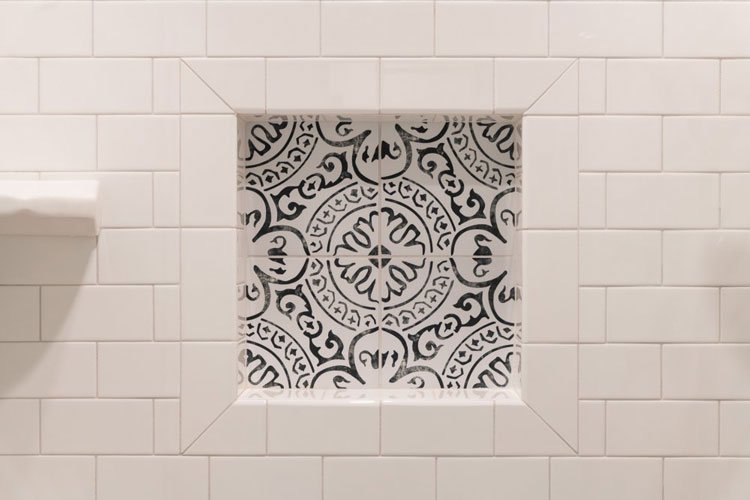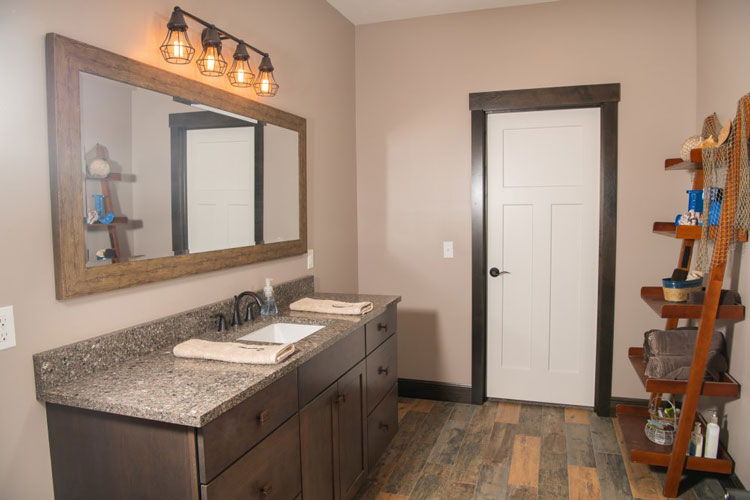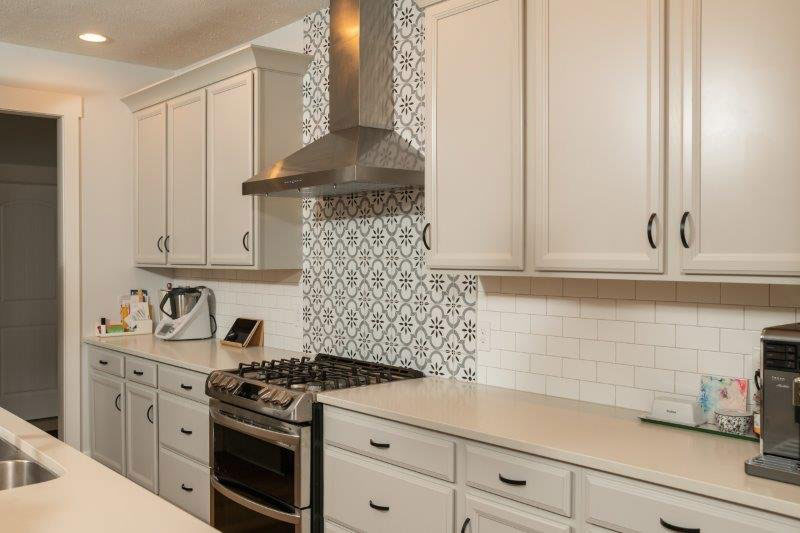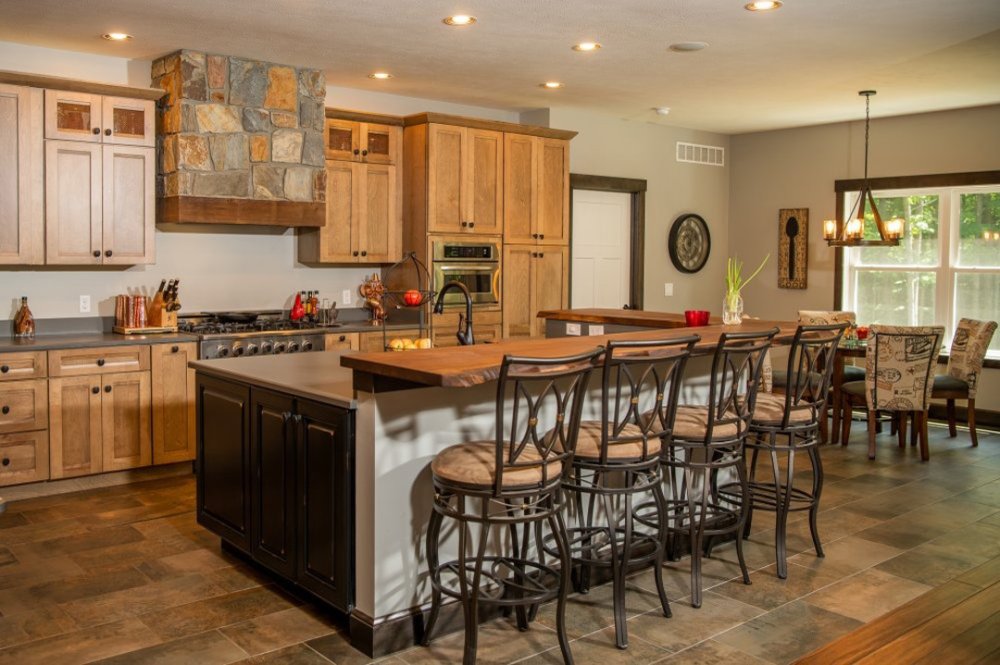8 FAQs About Choosing Tile For Your Custom Home
From the kitchen floor to the shower walls, tile is a popular material choice in new homes, and for good reason. Not only can it enhance a room's aesthetic, but it’s also durable, water-resistant, and low maintenance.
But it’s not the decision to use tile that’s the challenge—heck, the benefits speak for themselves. It’s choosing the right tile, the right layout, and the right rooms to put it in. As a leader in the home building space, Maleno gets a lot of questions about different materials during the design process. To help you make the best decision for your new home, we thought we’d answer some of the most frequently asked questions about tile.

1. What Are The Benefits of Tile?
Tile is a popular choice in custom homes for good reason. Key benefits of using tile in a custom build include, but are not limited to:
- Allergy-Friendly
- Design Flexibility
- Durability
- Easy Maintenance
- Longevity
- Water Resistance
In the coming years, tile (as well as hardwood) flooring will likely become even more desirable to homebuyers as new research shows the risk of microplastics being shed from synthetic flooring materials such as vinyl and laminate.
2. Are Tile Floors in Style?
Tile is timeless. In fact, historians have dated the first uses back to the 4th century BC. Although its popularity will wax and wane with interior design trends, it’ll always have a place in the home.
What’s important is finding a tile that you like, because as you’ll discover, social media has a lot of opinions on what’s in and what’s out. With so many shapes, colors, sizes, materials, and textures, you can match just about any aesthetic with tile, from modern farmhouse to mid-century modern.
3. Are Tile Countertops A Good Idea?
Sure, tile countertops can “work,” but they’re far from the top choice. The biggest issue comes from the grout, which is prone to staining and cracking. Its porousness may also harbor more bacteria than other countertop materials like quartz or granite.
Because tile creates an uneven surface, it makes your countertops less functional. From rolling dough to steadying a cutting board, daily kitchen tasks can become more difficult.
No one needs another chore, and tile countertops will definitely add a few. Reason being, your grout lines are going to need resealed regularly, especially if you’re using your kitchen a lot.
4. Are Tile Showers Worth It?
Hands down, tile showers are worth the investment. They look better, last longer, and increase the value of your home. Compared to acrylic and fiberglass tub surrounds, tile shower walls offer more durability, water resistance, and design options. To make it as low-maintenance as possible, we recommend using smooth, glazed tiles and epoxy or a cement-based grout with a water-resistant sealer.
5. Are Tile Showers Hard to Maintain?
Tile showers aren’t hard to maintain, but like anything else in a home, they do require upkeep. Because of the grout lines, some people think it’s easier to care for fiberglass or acrylic surrounds. In the short term, those people are correct: No grout lines and a smooth, nonporous surface make for quick cleaning.
However, tub surrounds can scratch and discolor over time. Further, mold can still grow if caulking isn’t maintained properly. But what’s particularly worrisome about tub surrounds is the risk of water damage. If the surround pulls away from the wall or the caulking between the joints fails, water can get behind the surround and into the wall, making a prime habitat for mold, which can lead to rot and cause long-term structural damage
If you’re trying to achieve the best of both worlds (low maintenance and high-end aesthetic), opt for large-format tiles. Doing so will result in fewer grout lines, which, of course, means less maintenance. You can also choose dark grout to hide stains better.

6. What is The Best Tile for Bathroom Floors & Showers?
Tile is arguably the best flooring choice for a bathroom as it offers a better combination of water resistance, durability, design flexibility, and long-term value than just about any material. But choosing the right type of tile for a bathroom can be challenging.
When prioritizing durability, safety, moisture resistance, and style, a few standout options consistently deliver on all fronts. When considering tile for the bathroom floor, look at:
- Porcelain Tile: Porcelain is the gold standard for bathrooms. It’s incredibly dense, water-resistant, and available in many styles. You can also find porcelain tile that’s rated for wet areas.
- Ceramic Tile: Glazed ceramic is moisture- and stain-resistant but more fragile. It can also get slippery. For that reason, we recommend using it only in half baths and low-traffic areas.
- Natural Stone Tile: Natural stone is undoubtedly beautiful and luxurious. But it’s also high-maintenance. If you’re up for regularly resealing it, it’s excellent for high-end primary bathrooms.
For most homeowners, porcelain tile is the perfect choice. It is moisture resistant, stylish, durable, and easy to care for.
7. Is a Cracked Tile Fixable?
If a tile cracks, know that it’s fixable. However, for the best long-term fix, you’ll want to replace the entire tile. Pro tip: Have your builder leave you a few extra tiles when they finish the job.
You can also use a tile repair kit to fill in cracks, which is okay in a pinch as it’s fast, cheap, and temporarily keeps water out. The problem is that the crack will still be noticeable, and more importantly, it’s not a structural fix, which makes that area more vulnerable to moisture.

8. What Tile Layout Should I Use?
When considering tile for a new home, often people focus so much on the material that they forget to think about the layout. However, the pattern you choose can dramatically influence a room's overall look and feel. Here are the layouts that should be top of mind:
- Straight (Grid) Lay: Clean, modern, and minimal. Tiles are aligned edge-to-edge in straight lines, like a grid. Best for contemporary kitchens, bathrooms, and minimalist designs.
- Brick (Running Bond): Classic and familiar. Like a traditional brick wall, each row is offset by half the length of the tile. It is excellent for subway tile backsplashes, shower walls, accent areas, and floors.
- Diagonal (Diamond): Sophisticated and visually expansive. Tiles are laid at a 45° angle to the walls. Excellent for smaller spaces where you want to create the illusion of more room.
- Herringbone: Stylish and high-end. Rectangular tiles are laid in a “V” pattern at a 45° or 90° angle. It is a popular choice for backsplashes, shower walls, or entryways, where a bold focal point is desired.
- Chevron: Clean and sophisticated. Tiles are cut at an angle to form a continuous V pattern. A solid pick for accent walls and backsplashes with a more contemporary or European feel.
- Basketweave: Classic and detailed. Small rectangular tiles are arranged to appear woven. It’s ideal for vintage-style bathrooms.
- Modular (Versailles/French): Rustic and dimensional. Uses multiple tile sizes in a repeating pattern. Large spaces like great rooms or outdoor patios use stone-look tiles.

A Stress-Free Design Process
It can be challenging to find the perfect tile for your custom home. But with the right building team, the whole building process, from choosing the tiles for the floor to the shingles on the roof, is worlds easier than going at it alone.
Reach out to Maleno for expert guidance throughout the process. We provide support that turns your vision into an actionable design. To learn more about our new construction, contact Maleno today.





